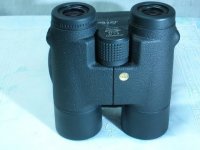To best clarify this situation, here is the best corporate view that I can post.
First, my previous comment about "facts are not correct" was totally intended to paint the picture that Zeiss does not simply "purchase and screw on eyecups". Tremendous effort and money has gone into the Conquest HD line and Zeiss is NOT a simple screwdriver shop. The complexities to get this done go far beyond all of our thoughts, mine included. If I insulted anybody with this comment, my apologies.
Next, "Made in" discussion. Zeiss has not hidden the fact that our 3 tier strategy uses different global advantages.
Victory: made in house, best that Zeiss can offer.
Conquest: a complex blend between manufacturing and sourcing.
Terra: designed, engineered, QC and warranty by Zeiss, with production out-sourced
Product management develops the products and determines what we make ourselves and what we source based on the product design, specs and line strategy. When the product build plan is done, it goes to our legal department to evaluate the process and provide us with directions on how to mark the product. We simply follow legal guidelines. In my time at Zeiss, I have not ever heard that product management is building products with specs to attain markings. The Conquest line falls into that strategy. Partially made by us, partially outsourced components and / or sub components, finished and QC'd in Germany, and marked based on the legal guidelines given to us. What is or is not done in house I cannot divulge. I'm sure you understand.
Regarding comment about Zeiss "going away":
We ALL clearly understand that although Zeiss was the leader in optics for 100 years +, we fell asleep and let others take a leading consumer market role. The good news is that Sports Optic is completely awake now and regaining what we have lost. Our 3 tier plan will build a giant base of users that become loyal to the Zeiss brand. Loyal users trade up. As long as we make "best of class" highly competitive products in the Terra and Conquest categories, AND continue to make new HT quality of products and expand the Victory offerings, it's only a matter when we control the top tier, not if. However, investments are substantial to do this. Marketing and communication expenses have to be reinvented. We've made HUGE strides in this over the last 24 month, with a lot more work to do. And for investments in products? A single new Victory product is into the 7 figures of investment. A Conquest product line (HD's), is also into the 7 figure range. In the last 24 months, we've introduced 57 sku's spanning 12 product classes across 3 product tiers... with GREAT things to come.All in, yea, we are pouring investments into our future.
So, I hope this settles some of the questions from this thread and explains a bit better why we do what we do. Also, apologies again for my comment to Giji.
Thanks for this Mike
Two things: corporate speak got the better of you eventually: SKUs? Stock Keeping Units? Would we know these better as 'products'?
In the entirely laudable and necessary enthusiasm to launch new product, don't neglect careful control of quality during design and production and quality assurance. You know where you have issues and they need dealing with.
Wish you and Zeiss all the good fortune in the world.
Lee Thickett







